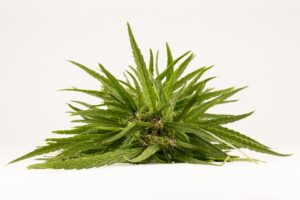For any medical marijuana card holder who’s just as interested in the science behind medical marijuana as they are the effects, delving into the genetic makeup of the plant begins with cannabinoids. The number of diverse cannabinoids contained within cannabis is vast; with scientists recently upping their discovered cannabinoid count from 104 to 111.
Cannabinoids come in all shapes and sizes, with some having much more of an impact on the body than others. For a long time, the solely discussed cannabinoid was tetrahydrocannabinol (THC). THC was first discovered back in 1964, and is the primary ingredient which provides the feeling of euphoria. THC, along with cannabidiol (CBD), are the key compounds for medicinal purposes.
An increasing number of Americans each year are turning towards medical marijuana for its ability to alleviate pain, insomnia, and anxiety, and also treatment for those suffering from cancer and HIV/AIDS. The medical benefits received from marijuana are due to a combination of cannabinoids, and how they interact with the human body. But how exactly do cannabinoids work?
Cannabinoids are sets of chemical compounds that bind themselves to receptors in the body that make up what is referred to as the endocannabinoid system. Many of our bodily cells possess specific binding sites containing cannabinoid receptors. Not only does our body naturally produce endocannabinoids which influence our appetite, mood, and memory, but as we consume medical marijuana, cannabinoids such as THC and CBD also bind to these receptors.
Cannabinoids we inhale or ingest work by imitating the compounds already found within our bodies, increasing the potency of the chemical’s effect. THC and CBD are by far the most commonly cited cannabinoids found within medical marijuana. While THC has a strong affinity for the CB-1 receptors found in the brain, CBD prefers CB-2 receptors, which are found throughout the body.
For a current or potential cannabis card holder, knowing the difference between THC and CBD is vital, as they provide remarkably different effects and benefits. As THC is a strongly psychoactive cannabinoid, consuming THC-rich marijuana can help with pain relief and nausea. While CBD is effective at relieving insomnia, stress, and anxiety; THC should be avoided in these instances due to its potential causation.
For the longest time scientists believed that the CBD cannabinoid had little-to-no effect on the CB1 receptor site, however new data now shows that this isn’t the case. While THC has a more direct impact on the CB1 site, CBD has now been shown to influence how the receptor responds to THC stimulation – meaning that depending on the particular ailment, a mix of both THC and CBD may be advantageous.
The cannabis plant itself contains more than 500 natural compounds – with cannabinoids making up a significant percentage. As the wide range of cannabinoid compounds interact with our body’s receptors within the central nervous system and immune system, for example, our body is affected in a litany of varying ways: from loss of short-term memory, to a slowing down of reaction times.
While both THC and CBD have been shown to assist with the treatment of a number of conditions, they aren’t the only important cannabinoids found within medical marijuana.
Cannabinol (CBN) is formed through oxidization when THC is exposed to the air. CBN can provide a less potent but similar psychoactive effect to THC, yet when the two are combined together it can make you feel drowsy – assisting with those suffering from insomnia. Both cannabinoids are also the only ones that have been found to fight pain through the use of endorphins and relaxing blood vessels.
Cannabigerol (CBG) is a non-psychoactive cannabinoid, similar to CBD, and is in-fact the building block for both THC and CBD. While more commonly found in hemp than in varieties of cannabis, it has been shown to reduce intraocular pressure – ideal for patients with glaucoma, as well as a significant pain reliever.
The third most common cannabinoid in the marijuana plant is Cannabichromene (CBC). While CBD often gets all the fame, in some strains CBC can actually take dominance. Research carried out in 2010 found that when coupled with THC, CBC becomes an effective anti-inflammatory, and has shown promise in fighting breast cancer.
With nearly half the states in the U.S. having legalized medical marijuana, it’s no wonder great strides are being made in extracting healing from its chemical compounds. Through latching onto receptors in the body, cannabinoids are able to greatly improve the standard of living for a variety of patients.
While a great source of alternative medicine, if you’ve recently acquired or are thinking about obtaining a medical marijuana card, it’s important to have the science in mind. As cannabis widens the blood vessels and increases heart rate, use is not advised for anyone with a heart condition, for example. But above all, between THC, CBD, and the many other compounds, know which strain is right for you.

